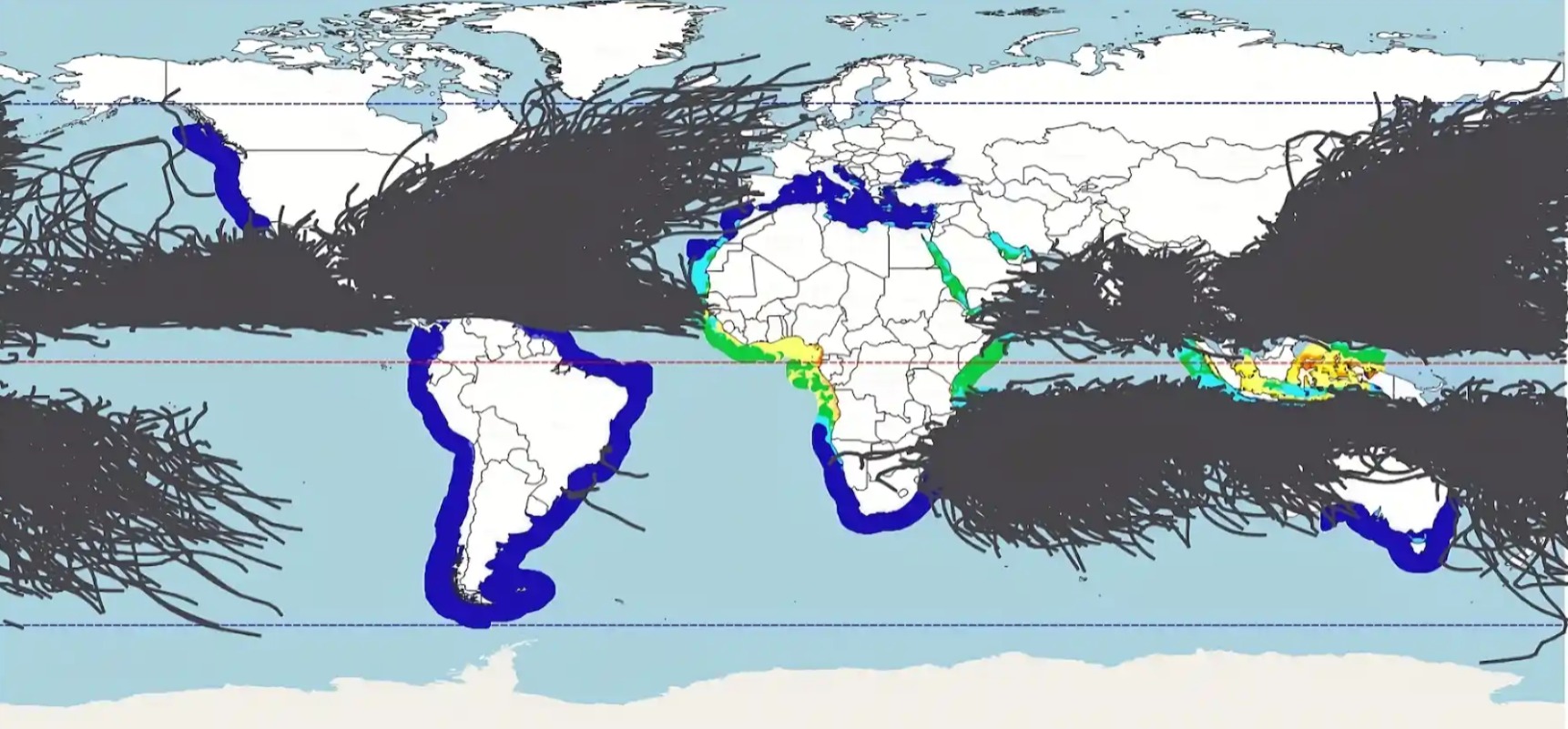[ad_1]
By Andrew Blakes and David Firnando Silalahi
Huge arrays of photo voltaic panels floating on calm seas close to the Equator may present successfully limitless photo voltaic vitality to densely populated nations in Southeast Asia and West Africa.
Our new analysis exhibits offshore photo voltaic in Indonesia alone may generate about 35,000 terawatt-hours (TWh) of photo voltaic vitality a yr, which is analogous to present world electrical energy manufacturing (30,000TWh per yr).
And whereas a lot of the world’s oceans expertise storms, some areas on the Equator are comparatively nonetheless and peaceable. So comparatively cheap engineering constructions may suffice to guard offshore floating photo voltaic panels.
Our high-resolution world warmth maps present the Indonesian archipelago and equatorial West Africa close to Nigeria have the best potential for offshore floating photo voltaic arrays.


Solar energy guidelines by mid-century
On present tendencies, the worldwide economic system can be largely decarbonised and electrified by 2050, supported by huge quantities of photo voltaic and wind vitality.
About 70 sq. kilometres of photo voltaic panels can present all of the vitality necessities of one million prosperous folks in a zero-carbon economic system. The panels could be positioned on rooftops, in arid areas, colocated with agriculture, or floated on water our bodies.
However nations with excessive inhabitants densities, resembling Nigeria and Indonesia, may have restricted area for photo voltaic vitality harvesting.
Their tropical location within the so-called “doldrum” latitudes additionally means wind sources are poor. Luckily, these nations – and their neighbours – can harvest successfully limitless vitality from photo voltaic panels floating on calm equatorial seas.
Floating photo voltaic panels will also be positioned on inland lakes and reservoirs. Inland floating photo voltaic has giant potential and is already rising quickly.
Our just lately launched paper surveys the worldwide oceans to search out areas that didn’t expertise giant waves or sturdy winds over the previous 40 years. Floating photo voltaic panels in such areas don’t require sturdy and costly engineering defences.
Areas that don’t expertise waves bigger than 6 metres nor winds stronger than 15m per second may generate as much as a million TWh per yr. That’s about 5 occasions extra annual vitality than is required for a completely decarbonised world economic system supporting 10 billion prosperous folks.
A lot of the good websites are near the Equator, in and round Indonesia and equatorial west Africa. These are areas of excessive inhabitants progress and excessive environmental values. Marine floating photo voltaic panels may assist resolve land use battle.
Indonesia has huge photo voltaic vitality potential
Indonesia is a densely populated nation, notably on the islands of Java, Bali and Sumatra. By mid-century, Indonesia’s inhabitants could exceed 315 million folks.
Luckily, Indonesia has huge photo voltaic vitality potential and in addition huge pumped hydro vitality storage potential to retailer the photo voltaic vitality in a single day.
About 25,000 sq. km of photo voltaic panels could be required to assist an prosperous Indonesia after full decarbonisation of the economic system utilizing solar energy.
Indonesia has the choice of floating huge numbers of photo voltaic panels on its calm inland seas. The area has about 140,000 sq. km of seascape that has not skilled waves bigger than 4m – nor winds stronger than 10m per second – previously 40 years.
Indonesia’s maritime space of 6.4 million sq. km is 200 occasions bigger than required if Indonesia’s complete future vitality wants had been met from offshore floating photo voltaic panels.


The longer term for offshore floating photo voltaic
A lot of the world seascape experiences waves bigger than 10m and winds stronger than 20m per second. A number of firms are working to develop engineering defences so offshore floating panels can tolerate storms. In distinction, benign maritime environments alongside the equator require a lot much less strong and costly defences.
We’ve got discovered essentially the most appropriate areas cluster inside 5–12 levels of latitude of the Equator, principally in and across the Indonesian archipelago and within the Gulf of Guinea close to Nigeria. These areas have low potential for wind technology, excessive inhabitants density, fast progress (in each inhabitants and vitality consumption) and substantial intact ecosystems that shouldn’t be cleared for photo voltaic farms. Tropical storms not often affect equatorial areas.
The offshore floating photo voltaic business is in its infancy. Offshore photo voltaic panels do have downsides in contrast with onshore panels, together with salt corrosion and marine fouling. Shallow seas are most well-liked for anchoring the panels to the seabed. And cautious consideration have to be paid to minimising injury to the marine setting and fishing. World warming may alter wind and wave patterns. Regardless of these challenges, we consider offshore floating panels will present a big element of the vitality combine for nations with entry to calm equatorial seas. By mid-century, a few billion folks in these nations will rely totally on photo voltaic vitality, which is inflicting the quickest vitality change in historical past.
This text was initially printed in The Dialog on 3 August 2023. It may be accessed right here: https://theconversation.com/limitless-energy-how-floating-solar-panels-near-the-equator-could-power-future-population-hotspots-210557
In regards to the Authors




[ad_2]


